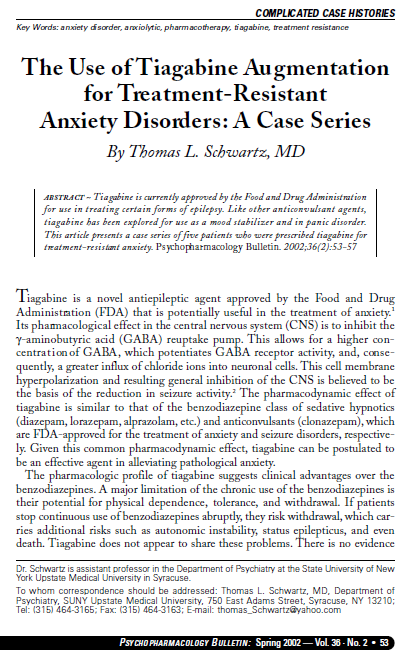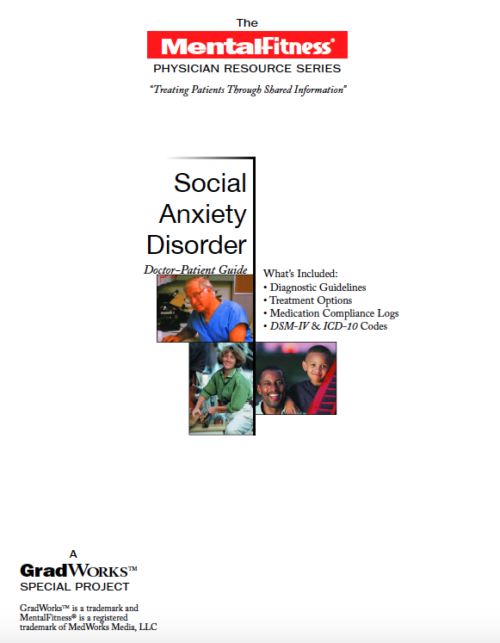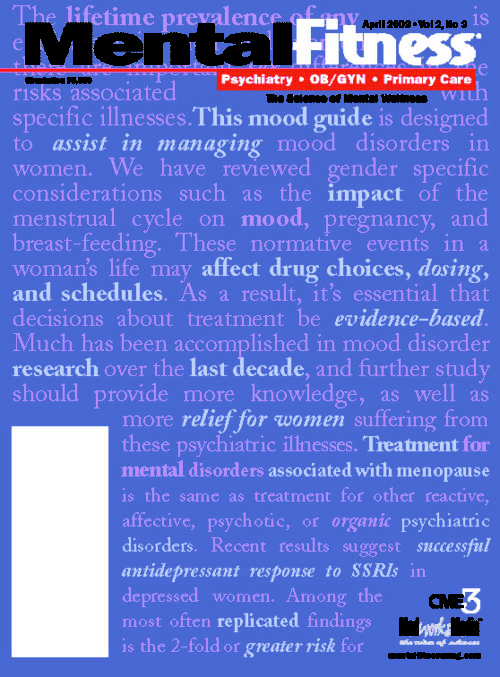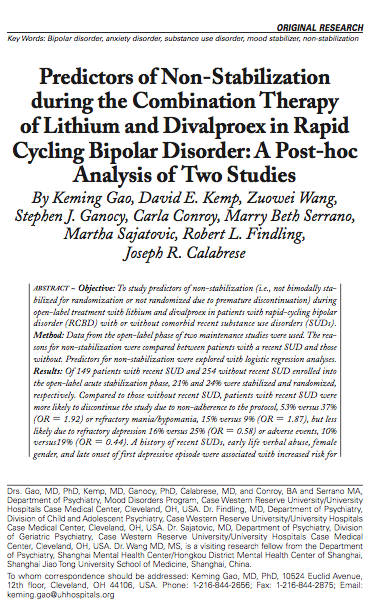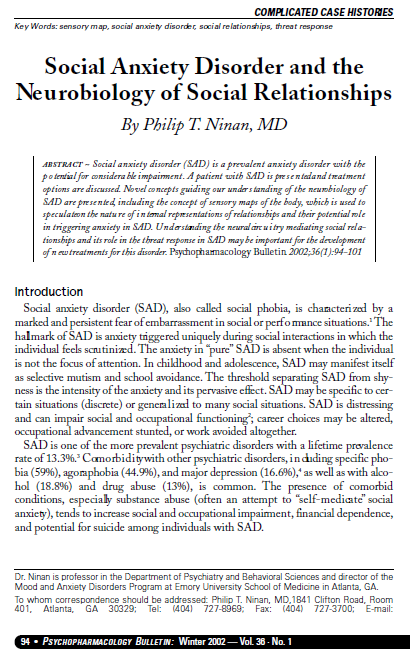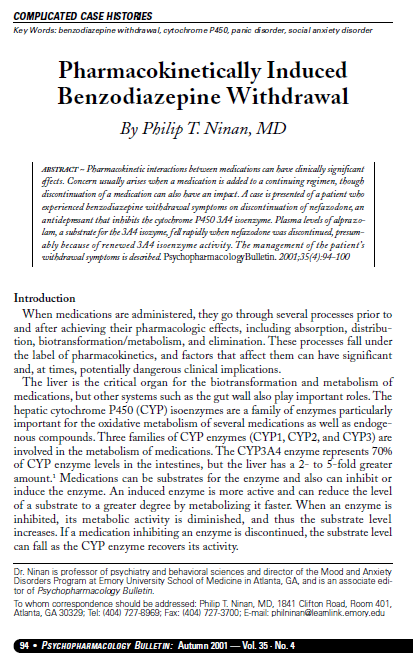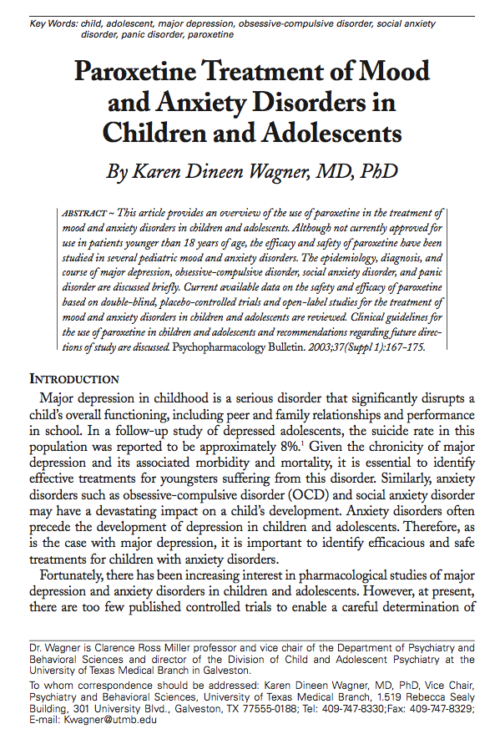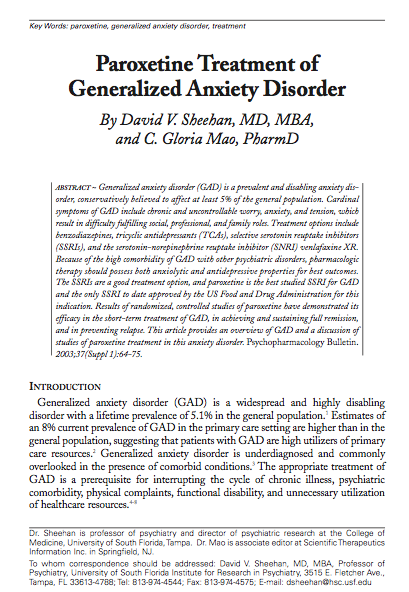Social Anxiety Disorder
For complete Dosing & Monitoring Guidelines, Please see The Black Book of Psychotropic Dosing and Monitoring
It’s normal to feel nervous in some social situations. For example, going on a date or giving a presentation may cause that feeling of butterflies in your stomach. But in social anxiety disorder, also called social phobia, everyday interactions cause significant anxiety, fear, self-consciousness and embarrassment because you fear being scrutinized or judged by others.
Social anxiety disorder is a chronic mental health condition, but treatment such as psychological counseling, medication and learning coping skills can help you gain confidence and improve your ability to interact with others.

Symptoms
Feelings of shyness or discomfort in certain situations aren’t necessarily signs of social anxiety disorder, particularly in children. Comfort levels in social situations vary, depending on the individual’s personality traits and life experiences. Some people are naturally reserved and others are more outgoing.
In contrast to everyday nervousness, social anxiety disorder includes fear, anxiety and avoidance that interferes with your daily routine, work, school or other activities.
Emotional and behavioral symptoms
Signs and symptoms of social anxiety disorder can include persistent:
- Fear of situations in which you may be judged
- Worrying about embarrassing or humiliating yourself
- Concern that you’ll offend someone
- Intense fear of interacting or talking with strangers
- Fear that others will notice that you look anxious
- Fear of physical symptoms that may cause you embarrassment, such as blushing, sweating, trembling or having a shaky voice
- Avoiding doing things or speaking to people out of fear of embarrassment
- Avoiding situations where you might be the center of attention
- Having anxiety in anticipation of a feared activity or event
- Spending time after a social situation analyzing your performance and identifying flaws in your interactions
- Expecting the worst possible consequences from a negative experience during a social situation
For children, anxiety about interacting with adults or peers may be shown by crying, having temper tantrums, clinging to parents or refusing to speak in social situations.
Performance type of social anxiety disorder is when you experience intense fear and anxiety only during speaking or performing in public, but not in other types of social situations.
Physical symptoms
Physical signs and symptoms can sometimes accompany social anxiety disorder and may include:
- Fast heartbeat
- Upset stomach or nausea
- Trouble catching your breath
- Dizziness or lightheadedness
- Confusion or feeling “out of body”
- Diarrhea
- Muscle tension
- Avoiding normal social situations
Common, everyday experiences that may be hard to endure when you have social anxiety disorder include, for example:
- Using a public restroom
- Interacting with strangers
- Eating in front of others
- Making eye contact
- Initiating conversations
- Dating
- Attending parties or social gatherings
- Going to work or school
- Entering a room in which people are already seated
- Returning items to a store
Social anxiety disorder symptoms can change over time. They may flare up if you’re facing a lot of stress or demands. Although avoiding anxiety-producing situations may make you feel better in the short term, your anxiety is likely to persist over the long term if you don’t get treatment.
When to see a doctor
See your doctor or mental health provider if you fear and avoid normal social situations because they cause embarrassment, worry or panic. If this type of anxiety disrupts your life, causes severe stress and affects your daily activities, you may have social anxiety disorder or another mental health condition that requires treatment to get better.
Causes
Like many other mental health conditions, social anxiety disorder likely arises from a complex interaction of environment and genes. Possible causes include:
Inherited traits. Anxiety disorders tend to run in families. However, it isn’t entirely clear how much of this may be due to genetics and how much is due to learned behavior.
Brain structure. A structure in the brain called the amygdala (uh-MIG-duh-luh) may play a role in controlling the fear response. People who have an overactive amygdala may have a heightened fear response, causing increased anxiety in social situations.
Environment. Social anxiety disorder may be a learned behavior. That is, you may develop the condition after witnessing the anxious behavior of others. In addition, there may be an association between social anxiety disorder and parents who are more controlling or protective of their children.
Articles and Publications Related to Social Anxiety Disorder


